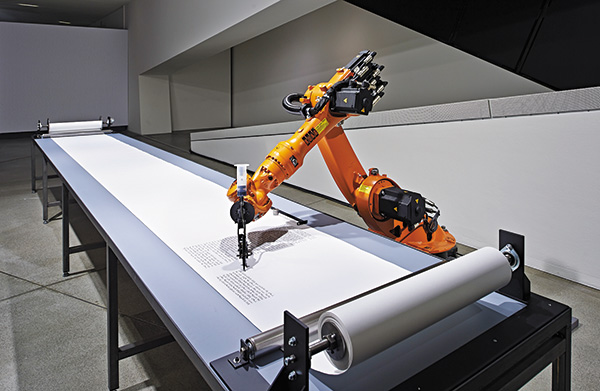
The artist group Robotlab has recently developed a method for creating a “handwritten” Torah robotically! Their work will be displayed through January 11, 2015, at the Jewish Museum in Berlin, Germany, in an exhibit titled “The Creation of the World.”
While a printed copy of the Torah (the Pentateuch) may be used in study, halakhah (Jewish religious law) dictates that only a handwritten Torah scroll may be used in synagogue readings and rituals. This means that all Torah scrolls used in synagogues are carefully and prayerfully written by human hand—letter by letter.
Outfitted with a pen nib and ink, the new robot has been programmed to mimic a human hand. Stroke by stroke, it writes like a scribe. Whereas it takes a human scribe close to a year or longer to write a Torah, the robot can complete one in three months because the robot does not have to rest—although it is no faster than the human hand it imitates.
Could the scroll written by this robot be used in a synagogue? The answer, alas, is no.
Even though the robot’s 260-foot-long scroll contains the necessary 304,805 letters required for a Torah scroll, it is still not considered kosher. Halakhah stipulates that a Torah scroll must be written on parchment and that the scribe must use a quill dipped in ink. These materials must come from ritually clean animals. The robot’s scroll is made of paper, not parchment, and written with a pen, not a quill.
Already a library member? Log in here.
Institution user? Log in with your IP address.

